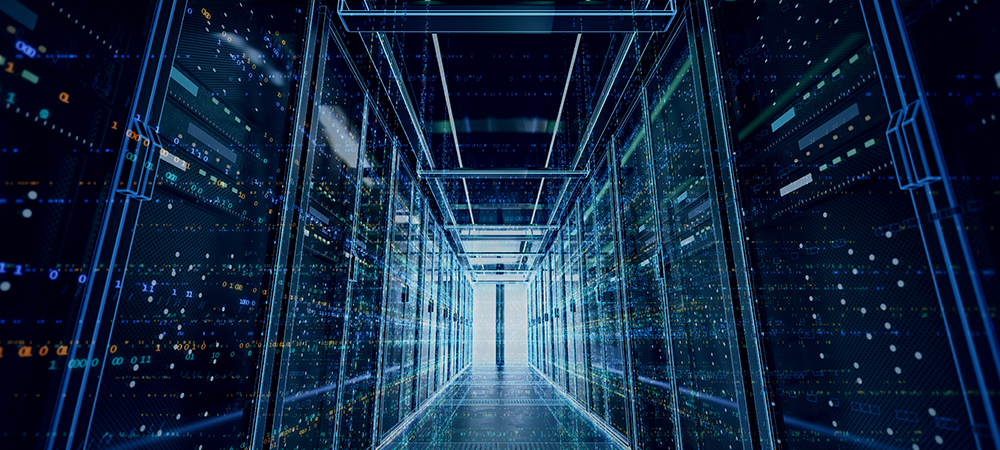To successfully navigate the challenges of the new normal, cutting-edge data centre managers have adapted a remote data centre management model. Herman Chan, President, Sunbird Software, highlights how remote management is not just a trend until COVID-19 restrictions relax, but a permanent change for the industry.

This article is the second of three in a series. Don’t miss the first part titled “The Trends Reshaping Data Centre Management”.
While COVID-19 certainly caused a dramatic shift in how data centres must be managed, the pandemic only accelerated the trends in Digital Transformation that were already driving data centre professionals to manage their data centres remotely.
Based on many sources of survey data as well as our own conversations with hundreds of customers in our global user group programme, the top priorities and challenges for data centre managers in the new normal have become clear.
They need to keep up with significantly increased demand for digital services, manage more complex and distributed infrastructure, increase efficiencies, boost people productivity and reduce costs – all while keeping on-site staff to a minimum with no visibility into the physical sites.
To successfully navigate these challenges, cutting-edge data centre managers have been able to seamlessly transition to a remote data centre management model. In fact, many of them were already there.
Further, remote management is not just a trend until COVID-19 restrictions relax, but a permanent change for the industry. According to Uptime Institute, nine in 10 data centre operators plan to increase their use of remote monitoring and management tools. Uptime Institute also found that 77% of data centres plan to continue remote work for years to come, long after the brunt of the pandemic has passed.

Organisations are developing comprehensive remote data centre management strategies and reallocating budgets and finding funds to deploy a complete remote data centre management toolkit. They are racing to be able to efficiently manage the complexity of modern Edge, colocation and retail infrastructure, to be able to provide clear and visual instructions to smart hands to get work done quickly and accurately, and to drive automation, data sharing and collaboration across all remote teams.
While some are struggling to gain visibility into all their data centre sites today, early movers have paved the way for others to find success. Data centre and Edge site managers with the experience and willingness to adopt technology have told us what tools they rely on to maintain uptime, increase efficiency and improve productivity no matter where they or their infrastructure is located.
The remote data centre management toolkit
Modern infrastructure management professionals need to leverage a wide range of technologies spanning hardware, software, meters, sensors and more, plus a comprehensive integration strategy to pull it all together.
The remote data centre management toolkit to succeed in the new normal and beyond includes:
- Remote power control. Intelligent rack PDUs with outlet control allow you to remotely power on, power off and power cycle outlets across multiple PDUs.
- Remote power monitoring. Intelligent power infrastructure such as rack PDUs with inlet- or outlet-level meters, branch circuit meters, busway meters, inline meters and SNMP management cards for UPSs enable you to increase uptime, improve capacity planning and utilisation existing power capacity, report on Power Usage Effectiveness (PUE) and reduce energy consumption and costs.
- Remote environment monitoring. Temperature, humidity, airflow, pressure, water and vibration sensors provide data that helps ensure the overall health of your sites, mitigate against threats of downtime and improve efficiency. Sensors can be deployed as plug-and-play devices that connect to intelligent rack PDUs, rack controllers, inline meters, branch circuit monitors and gateway devices.
- Remote cabinet security. RFID and biometric door lock controls for racks and cabinets,cabinet door access audits, remote door lock controls, door contact sensors and IP cameras are must-haves to protect your assets and data from physical security threats.
- Remote out-of-band console management. KVM-over-IP switches allow you to remotely access and control multiple servers from one keyboard, mouse and monitor and are used to perform functions like rebooting devices. Serial console servers can connect to ‘headless’ devices like routers, LAN switches, firewalls, PDUs, UPSs and storage systems and are used to complete tasks like updating firmware.
DCIM software: The central piece of the remote management toolkit
Data Centre Infrastructure Management (DCIM) software provides the remote monitoring and remote operations management that is required to complete the toolkit and bridge information across all organisational domains. DCIM software enables data centre and Edge site managers to centrally manage all their infrastructure resources in a single pane of glass to maintain uptime, improve efficiency of capacity utilisation and increase the productivity of people – all from any location in the world.
In the new normal, leading data centre experts are leveraging second-generation DCIM software to:
- Track all assets. Maintain an accurate inventory of infrastructure assets and real-time rack elevation views across all data centre and Edge sites, including equipment in racks like servers, storage, networking equipment, rack PDUs, patch panels and even applications.
- Trend temperature and humidity. Real-time data from environment sensors can be collected, retained and trended over time in easy-to-understand, flexible charts and visual reports. This enables actionable insights such as identifying hot spots, overcooling, or extreme humidity conditions that can be remediated to improve uptime, increase efficiency and reduce energy costs.
- Monitor rack-level power utilisation. Live measured readings from rack PDUs, busway tap boxes and other intelligent infrastructure can be monitored to ensure power capacity is not exceeded and to discover and utilise stranded capacity.
- Perform rack-level failover scenarios. Power redundancy can be tracked for each cabinet to ensure power is always available to IT equipment and maintain uptime even if there is a failure on a single power supply or power path.
- Perform power path impact analysis. Live data from power meters can be used to model your power path so you can easily understand exactly how potential moves, adds and changes will affect power utilisation and capacity and know that work done in the data centre will not cause downtime by overloading circuits.
- Balance three-phase power. Percent imbalance on all three phases can be automatically calculated and you can be alerted to any imbalance in your power path based on thresholds you set to improve uptime and energy efficiency.
- Monitor warning and critical events. Thresholds can be configured for polled power and environment sensor data so you can receive automatic email notifications of warning and critical events like overloaded circuits, high or low temperature or humidity, or three-phase deviations.
- Manage all spares for break/fix. Inventory and assign all your hard drives, cards, memory modules, power supplies, patch cables and any other component, even boxes of screws. Know the exact count of your in-stock and in-use parts and get automatic emails when you need to resupply.
- Manage parts and bills of material (BOM). When provisioning new equipment for projects in the data centre, you can track all the necessary parts and quickly draft a BOM.
- Manage all infrastructure projects. Plan, implement and report on any type of infrastructure project. Know the status, costs, start/end dates and requirements of space, power and cooling in one tool.

Bringing it all together
In the new normal, being unable to physically go on site may be an adjustment for some, but ultimately the objectives remain the same: maintain uptime, increase efficiency of capacity utilisation and improve the productivity of people. Given the complex and distributed nature of modern data centre and Edge environments, the only way to achieve these objectives is remotely.
This should not be seen as a challenge or obstacle. Rather, the opportunity for improved management of all global sites is enormous for those who deploy second-generation DCIM for remote data centre management. Industry experts have spoken and they report 40% more usage out of facilities and power resources, 50% improved asset tracking efficiency, 25% less time managing assets, locations and connectivity, and dramatically reduced potential for human error


